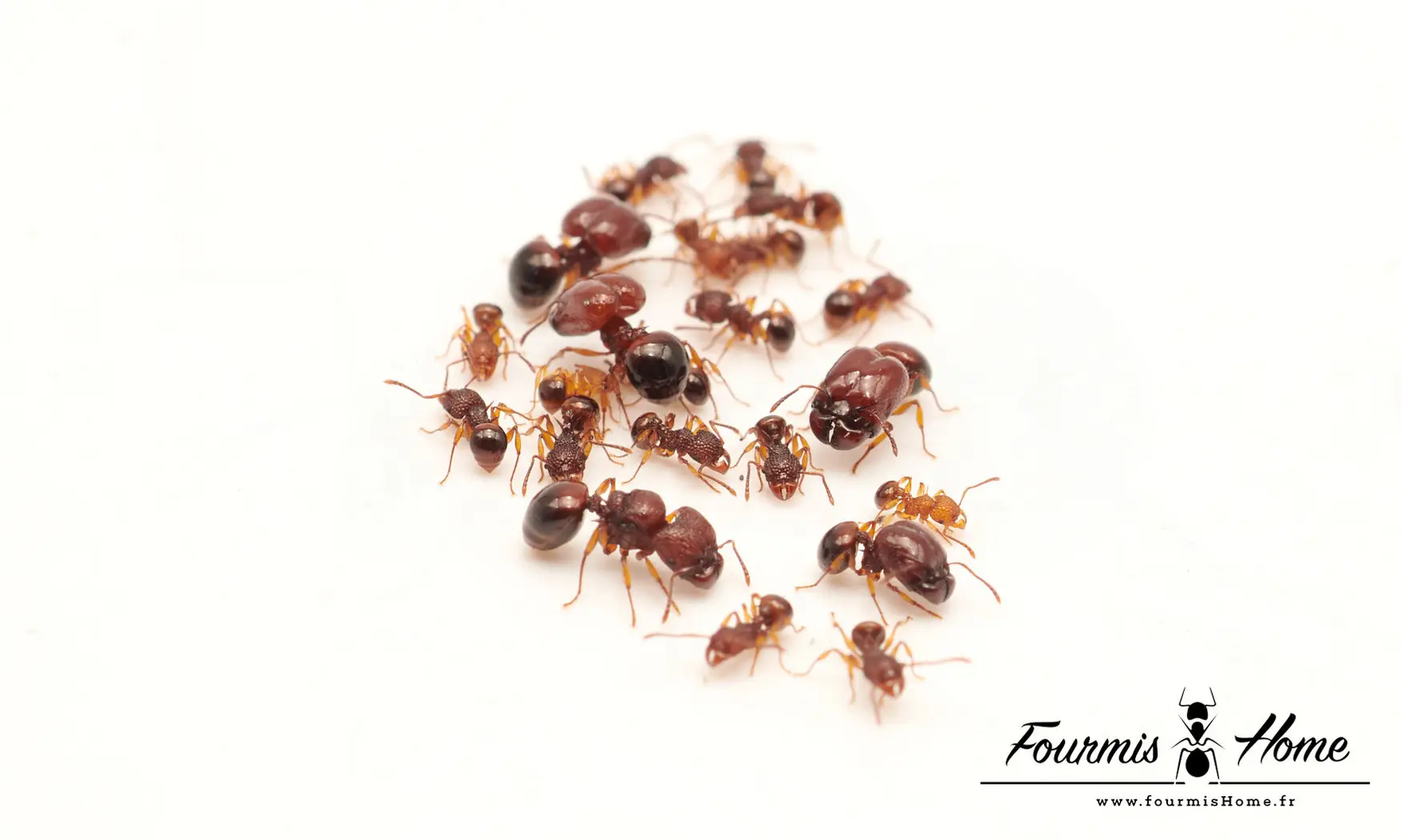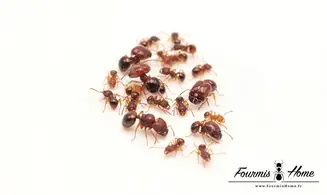



Acanthomyrmex thailandensis
Reference : AFOUR-001
79.90€
Latin name: Acanthomyrmex thailandensis
Taxonomy: Subfamily: Myrmicinae
Breeding level: Intermediate
Geographical distribution: Thailand
Habitat: Rainforests
Colony form: Monogynous
Queen: Size: 7 - 9mm Color: light red to brownish
Workers: Size: 2 - 4mm Color: light red to brownish
Soldier: 6 to 8mm Color: light red to brownish
Male: Size: 3 - 5mm Color: Black
Food: Mainly insectivorous, such as mealworms, flies, mosquitoes, crickets etc...and fig seeds
Humidity: Hunting area: 60 - 70% Nest: 70 - 80%
Temperature: Hunting area: 24 - 30°C Nest: 24 - 28°C
Hibernate: No
Nest type: Plaster nest or terrarium
Description: Very small and special species from Thailand. Acanthomyrmex thailandensis feeds in the wild mainly on fig tree seeds. It forms a few majors per colony with particularly large heads, capable of cracking fig seeds with their powerful mandibles.
Development: With the onset of the rainy season
Foundation: Semi cloistered
Colony size: rarely exceeds 200 workers
Taxonomy: Subfamily: Myrmicinae
Breeding level: Intermediate
Geographical distribution: Thailand
Habitat: Rainforests
Colony form: Monogynous
Queen: Size: 7 - 9mm Color: light red to brownish
Workers: Size: 2 - 4mm Color: light red to brownish
Soldier: 6 to 8mm Color: light red to brownish
Male: Size: 3 - 5mm Color: Black
Food: Mainly insectivorous, such as mealworms, flies, mosquitoes, crickets etc...and fig seeds
Humidity: Hunting area: 60 - 70% Nest: 70 - 80%
Temperature: Hunting area: 24 - 30°C Nest: 24 - 28°C
Hibernate: No
Nest type: Plaster nest or terrarium
Description: Very small and special species from Thailand. Acanthomyrmex thailandensis feeds in the wild mainly on fig tree seeds. It forms a few majors per colony with particularly large heads, capable of cracking fig seeds with their powerful mandibles.
Development: With the onset of the rainy season
Foundation: Semi cloistered
Colony size: rarely exceeds 200 workers

